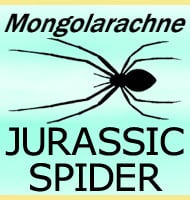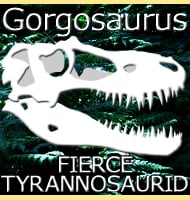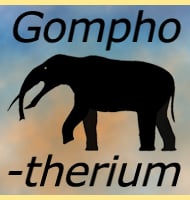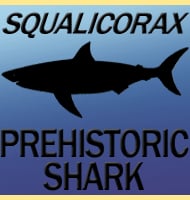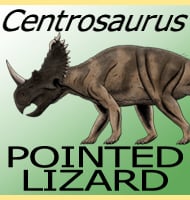Britain might not be the first place you think of when the subject of dinosaurs comes up, yet some of the most important dinosaur discoveries are directly attributable to the dinosaurs that lived in what would eventually become the British Isles.
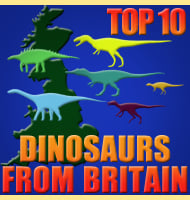
Although in popular media discoveries in North America, Asia, and more recently China and South America have eclipsed those made in Europe, it is important to remember that dinosaur palaeontology started in Britain, and that the dinosaurs of the British Isles have a great many firsts attributed to them.
10 - Neovenator
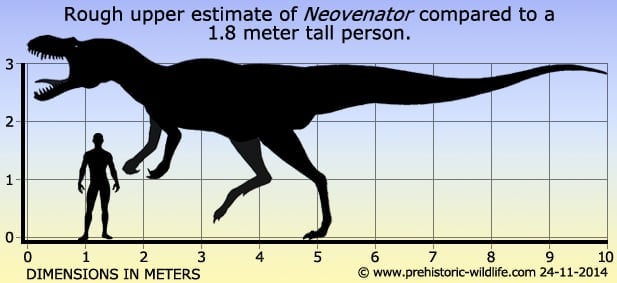
Named as a new genus in 1996, Neovenator was amongst the larger British predatory dinosaurs of the Early Cretaceous. How big Neovenator could grow to though is still uncertain, with estimates ranging from seven and a half to ten meters long.
There has also been some uncertainty as to what type of theropod dinosaur that Neovenator was. At first Neovenator was thought to be European relative of Allosaurus, then later it was thought to be a member of the Carcharodontosauridae, a group which is known to contain some of the largest theropods known to us.
Today Neovenator is more commonly treated as the type genus of its own group the Neovenatoridae, a group that is considered to be related to the Allosauroidea and Carcharodontosauridae, yet still be distinct.
9 - Scelidosaurus
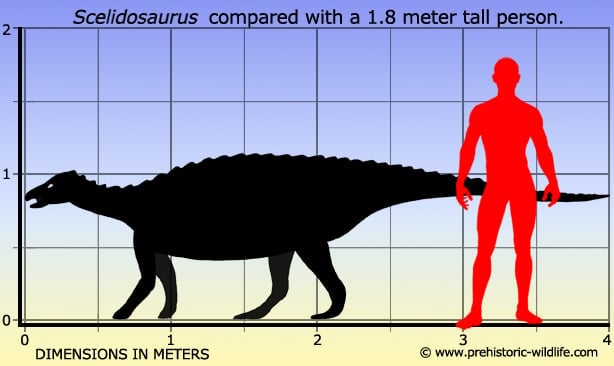
Scelidosaurus is one of the most primitive members of the Thyreophora, the group of dinosaurs that is the home to the famous stegosaurs and ankylosaurs. Scelidosaurus didn’t have elaborate plates, spikes or tail clubs however, but Scelidosaurus did have an extensive covering of bony osteoderms that ran down the length of the body.
These would have provided a substantial amount of defence from the teeth and claws of predators, possibly so much that Scelidosaurus were largely left alone in favour of less tough prey.
First named as a new genus in 1859, Scelidosaurus is one of the most completely known dinosaurs to come from Britain.
8 - Dacentrurus
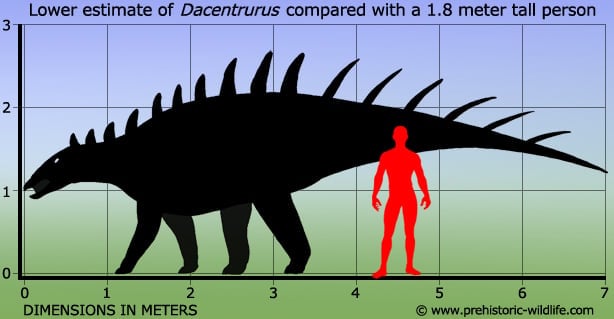
Dacentrurus was technically the first stegosaurid dinosaur to be named. However when it was named in 1875, it was known as Omosaurus.
Some years later it was realised that this name had already been used to name a crocodilian, and so in 1902 the name Dacentrurus was created.
However, Dacentrurus is known as a stegosaurid dinosaur because the genus Stegosaurus was named in 1877, and so it has both validity and priority in establishing the group name.
Dacentrurus was actually quite large, and although a complete individual has not yet been found, when isolated remains are compared to those of other genera, Dacentrurus is considered to be similar to the smaller species of Stegosaurus in size.
Dacentrurus is noted for having a larger number of spines on the posterior half of the body, and while these may have offered some defence against predators, they may have equally served a display function.
7 - Hypsilophodon
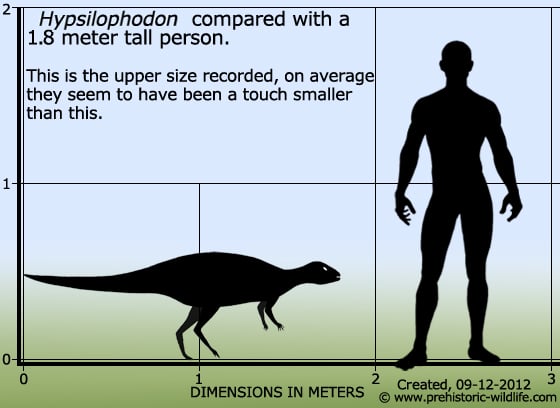
Easily the smallest dinosaur on this list, Hypsilophodon was a bipedal ornithiscian dinosaur that had a small delicate skull suited for selective browsing over choice plant parts.
In the past a lot of misconceptions about Hypsilophodon have been put forward including that it would climb trees, had armoured skin, was built like a lizard or perhaps even hopped around like a kangaroo, all theories that have no evidence to support them.
The most realistic scenario for Hypsilophodon is that it would roam around on the ground in a usually bipedal posture, perhaps supporting itself with its fore-limbs to bend down to drink, as well as relying upon speed and agility to escape predators.
6 - Eotyrannus
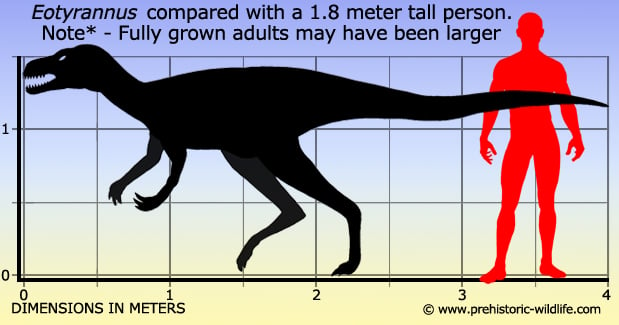
Almost everyone knows what a Tyrannosaurus rex was, and a great number of people are aware that it was just one member of a family of large predatory theropods that dominated Asia and North America during the late mid to late Cretaceous.
What many people do not realise is that their distant ancestors had more humble beginnings and that Eotyrannus is amongst the first tyrannosaurs to appear that we know about. Eotyrannus is regarded as a tyrannosauroid (later and more advanced forms like Tyrannosaurus are tyrannosaurids), and is the first genus of its type to be named from Britain, specifically the Isle of Wight.
We don’t know yet if larger tyrannosaurids roamed Britain at the end of the Cretaceous as most of the dinosaur fossil bearing formations of Britain are Jurassic to early Cretaceous in age. But the discovery of an early tyrannosaur is yet more proof that Britain has seen a very diverse range of theropod dinosaurs.
5 - Cetiosaurus
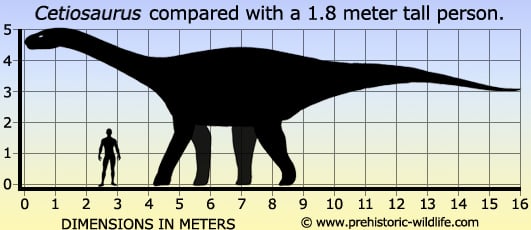
The name Cetiosaurus was first coined in 1841, with a more complete description appearing in 1842, the same year that Richard Owen, the describer of Cetiosaurus created the word dinosaur to describe the rapidly growing number of large Mesozoic reptiles that were being named.
However Owen didn’t consider Cetiosaurus a dinosaur when he described it, instead he thought that he was describing some kind of giant marine crocodile from the isolated remains that he had.
The truth of the matter is that not only was Cetiosaurus a sauropod dinosaur, it was the first sauropod to ever be described to science, albeit interpreted as something else.
With the type species being roughly sixteen meters long, Cetiosaurus was not a fantastically huge sauropod, but still one that was large for its time and location given that Western Europe is not thought to have had expansive land masses like other areas of the world at the time.
4 - Polacanthus
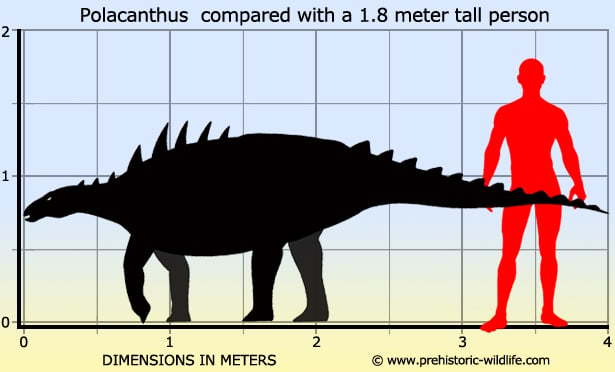
Polacanthus was amongst the first armoured dinosaurs to be named and is today considered as the type genus of the Polacanthinae, a group that contains similar dinosaurs known from as far away as North America and China.
Polacanthus is not that well preserved however, the hind quarters are fairly complete, but the forward half of the animal and the skull are represented by only very incomplete remains, so modern reconstructions of Polacanthus rely much upon relative genera filling the gaps.
3 - Baryonyx
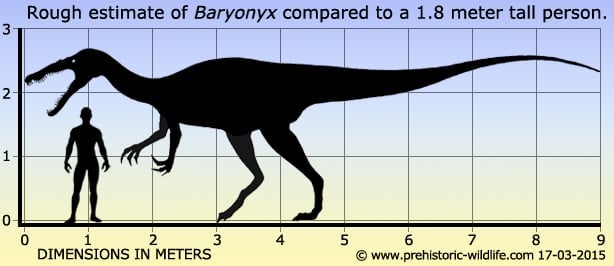
First discovered in the English county of Surrey, when word got out about Baryonyx in 1986 people were stunned at the then bizarre appearance of a theropod dinosaur with a crocodile-like head, and large heavy claws on its hands.
What they did not realise at the time however was that they were looking at the basic true form of a spinosaurid dinosaur.
This was not fully realised until later in the twentieth century however when the first partial skull of Spinosaurus was found and realised to be similar to Baryonyx.
Baryonyx was named from what is now known to have been a juvenile individual, and although the partial remains of other Baryonyx have been found, the true adult form of Baryonyx is still unknown, and it’s possible that as Baryonyx grew older, the neural spines on their vertebrae may have grown taller to support a hump-like growth like that seen in other spinosaurid dinosaurs.
There is even speculation that the North African spinosaurid genus Suchomimus may actually be an older Baryonyx since that genus was based upon a specimen of a sub-adult. Extra support for this comes from the fact that Baryonyx fossils are not only known from England, but now also from Spain and Portugal as well.
2 - Iguanodon
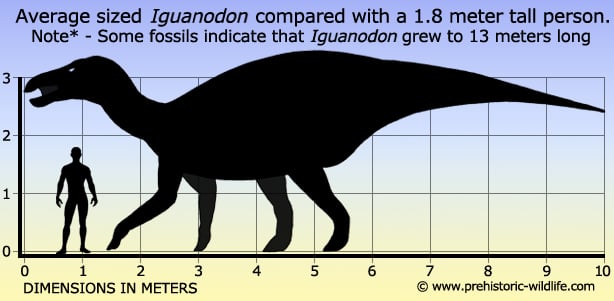
Named in 1825 Iguanodon was the second dinosaur genus, and the first ever plant eating dinosaur genus to be named.
When described Iguanodon was noted for having teeth similar to an Iguana (the name Iguanodon means ‘Iguana tooth’), and so early concepts about Iguanodon were along the lines of a huge gigantic Iguana.
When the first sculpture for display in the Crystal Palace Park was built it took on an appearance of an elephantine lizard.
It was not until about 1882 that actual Iguanodon skeletons were assembled that a closer picture of what Iguanodon looked like emerged, though these were still in an incorrect completely upright posture with the tail dragging behind it.
It would not be until later in the twentieth century that scientifically accurate reconstructions of Iguanodon began to appear.
Large numbers of Iguanodon fossils have now also been found in mainland Europe (particularly Belgium), with additional fossils from North America and Asia also been assigned to the genus.
There is now also a whole group of dinosaurs that are similar to Iguanodon that have been found, and because Iguanodon was the first of these to be named, these dinosaurs are referred to as iguanodonts.
Mostly known from the Jurassic and early Cretaceous, the large numbers of remains of these dinosaurs, from all over the world indicates that these dinosaurs were amongst the most successful.
In addition their later descendants would evolve into the hadrosaurs, similarly formed dinosaurs that would become some of the most abundant during the Cretaceous period.
1 - Megalosaurus
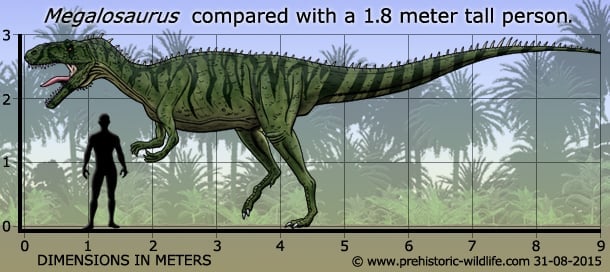
This list couldn’t really have anything else as number one since Megalosaurus was named in 1824 it was the first ever dinosaur genus to be named (though Iguanodon was a close second).
Like with early reconstructions of Iguanodon, early reconstructions of Megalosaurus were way off from its true body form.
Back in 1824 the name dinosaur hadn’t been invented yet, but Megalosaurus was the public’s first indication of a type of giant and previously unknown reptiles that once roamed the earth.
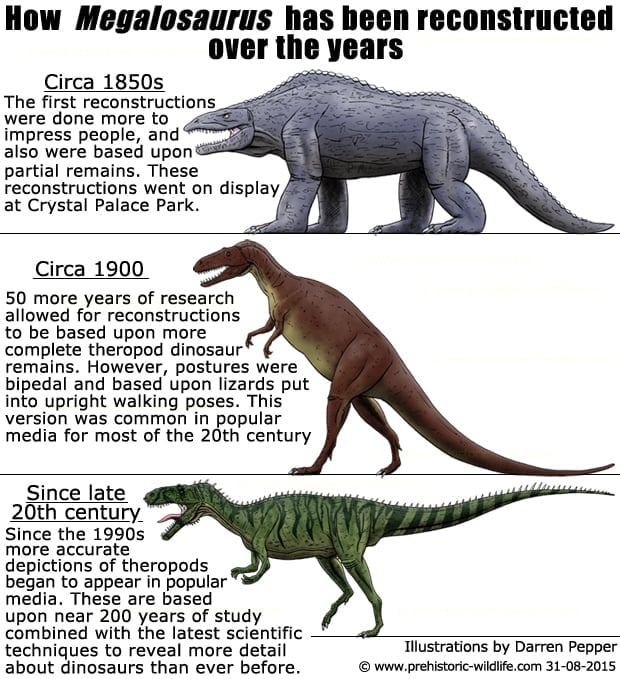
This was not the start of palaeontology however as scientists and naturalists all over the world (but particularly in Europe) had already been studying the remains of long extinct animals along the lines of fish and mammals for many decades, with the origins for this study going back hundreds of years before this.
Because of its early history however, Megalosaurus suffered the wastebasket taxon effect where over eager researchers quickly associated fossils to the genus without much study as to if they actually belong.
This has led to a varied and often outdated collection of information sources about Megalosaurus, and in future it’s probable that what we know about Megalosaurus will change again.
What we do know about Megalosaurus however is that as a theropod dinosaur it would have been a predator of other dinosaurs, and with a length seven (or perhaps more) meters, it would have been amongst the larger predators of its time in the Jurassic.


